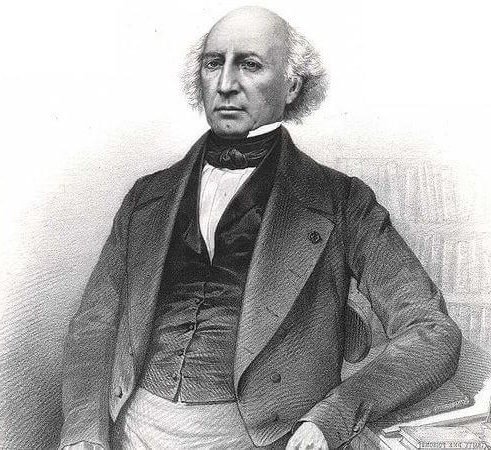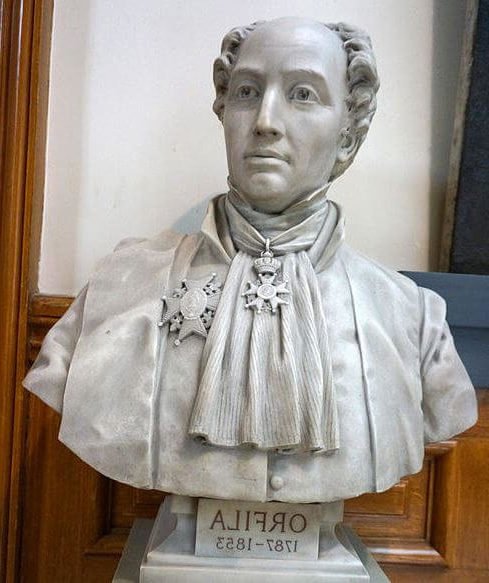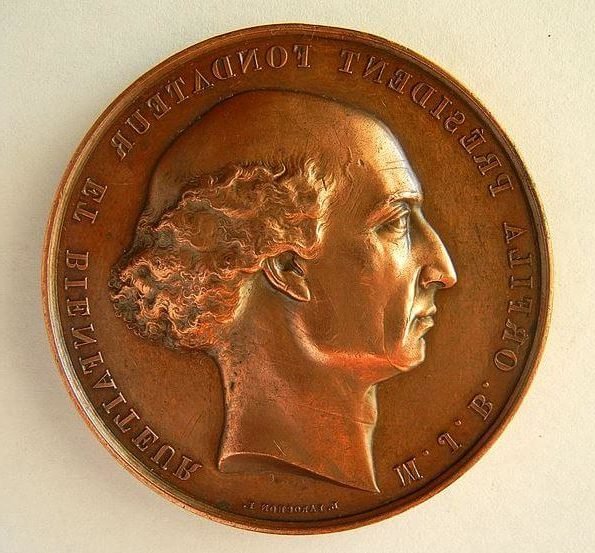Mathieu Joseph Bonaventure Orfila (April 24, 1787–-March 12, 1853) is often known as the ‘’Father of Toxicology’’. Orfila was a Spanish toxicologist and chemist commonly considered as the originator of toxicology.
Mathieu Orfila was the eminent personality of 19-century and his ‘’ Treatise on Poison’’ is still considered as the classical text. His treatise has a valuable standard in crime forensics.
In those days, the most primary useful type of poison was arsenic, but there was not any predictable and reliable process to check the presence of poison.
He was a pioneer to refine the prior process and created new useful techniques. He also discussed that technique in his first treatise.
He is the most prominent and leading figure of the golden age of French medicine and toxicology. Orfila is known as one of the most respected and influential figures in crime history to deal with criminal cases with scientific facts.
Early Life and Education:
Mathieu Orfila was born on April 24, 1787, on the island of Minorca, Spain. He was not interested in his father’s work and stayed away from his father’s traditional work of merchant seafaring.

He was not satisfied with this work and terminate that career as a merchant seafaring when he was coming back from a voyage of Sicily, Egypt, and Sardinia. Subsequently, he was ordered to study medicine when he was only fifteen years old.
Scientific Work:
Before going to Paris for higher education, he achieved a graduation degree in both disciplines of toxicology and chemistry from Valencia and Barcelona. In the year 1813, he delivered lectures to disciples about poison and demonstrate them how to check the presence of arsenic.
His fist prominent work entitled’’ Traité des poisons tirés des règnes minéral, végétal et animal; ou, Toxicologie générale’’ was first published in the year of 1814.
After completing their graduation, he applied for the post of chemistry professor in a medical college in Spain but was rejected and at last he moved to France.
In 1816, he was appointed to the royal physician of French monarch Louis XVIII and next year, he becomes selected as a professor of Chemistry at the Athénée of Paris, France.

Here he published the research work entitled “Eléments de chimie médicale (on the medical application of chemistry)”.
In 1818, he published another scientific work name “Secours à donner aux personnes empoisonnées ou asphyxiées, suivis des moyens propres à reconnaître les poisons et les vins frelatés et à distinguer la mort réelle de la mort apparente” about the recognition of poison and to distinguish about real death and murder.
Subsequently, he became a permanent French citizen and was selected as a Professor of medical jurisprudence in 1819. Four years later, he becomes appointed as a professor of chemistry.

Due to his hard work and their scientific publications, he became allocated as dean of the faculty of medicine in the year of 1830.
Mathieu was so dedicated and helped to the foundation of museums and hospitals, dissection centers in Clamart, clinics, and botanical gardens and to establish a new medical school.
Throughout his life career, he was a medical expert in criminal cases and become a notable personality of that century. He also expressed that the poison like arsenic around the grave may affect the body and mistakenly considered for poisoning which is not true.
Orfila was also a member of a Parisian social and intellectual elite and like other European scientists, he becomes criticized by political intrigue.
On February 28, 1848, he becomes abruptly removed from his deanship post. A commission was set up to check and investigate any kind of irregularity during his tenure but the commission found none.
His post was rehabilitated and he served as a president of the Academy of medicine by 1851. He died on 12 March 1853 in Paris, France at the age of 65.
Mathieu Orfila and Lafarge Trial:
Mathieu Orfila was summoned to study the Lafarge murder trial in Paris. In the year of 1840, Lafarge’s wife Marie Lafarge was tried to murder her husband by using arsenic poison.
At that time none could be found the presence of arsenic in the victim body due to lack of any reliable procedure. Orfila was summoned by the court to investigate the criminal case.
After investigation, he found that the Marsh Test is not trustworthy with a lack of any correctness. His precise work demonstrated the presence of arsenic in the victim body and the court announced Marie Lafarge to be found guilty and she was the murderer of her husband.
Timeline:
1787: Mathieu Orfila Birth
1804-1807: Attended the Course of Medicine
1814: Published a Scientific Paper
1815: Married to Anne Gabrielle Lesueur
1816: Become a royal physician
1817: Succeeded as a professor of Chemistry
1818: Become a French citizen
1818: Published another scientific paper
1819: Professor of legal medicine
1830: Dean of the Faculty of Medicine
1834: Knight of the Legion of Honor
1840: Mathieu Orfila and Lafarge Trial
1848: Refused from the post of dean
1853: Died at the age of sixty-five

Thank you for your whole efforts on this blog. My daughter take interest in going through investigations and it is easy to see why. Many of us learn all relating to the dynamic method you give powerful secrets via the web blog and in addition strongly encourage response from other individuals on that theme and our own child is without question understanding so much. Enjoy the rest of the new year. You are always conducting a great job.
Hi, і think that i sаw you visited my blog so i came to “return the favor”.I
am attempting to find things to enhance my site!I suppⲟse its ok to սse some of your ideas!!
I am glad to be one of several visitors on this great site (:, appreciate it for putting up.
I have to express thanks to you for bailing me out of this type of matter. As a result of looking out throughout the world wide web and getting suggestions which are not powerful, I assumed my life was gone. Living without the approaches to the issues you have sorted out all through this guide is a critical case, as well as ones that would have negatively damaged my career if I had not noticed your web site. That skills and kindness in dealing with every item was helpful. I am not sure what I would’ve done if I hadn’t encountered such a solution like this. I can at this time relish my future. Thanks a lot so much for the impressive and amazing help. I will not think twice to suggest your web site to anybody who should get recommendations on this subject.
Good information. Lucky me I found your site by accident (stumbleupon).
I’ve saved it for later!
Review my homepage – nordvpn coupons inspiresensation, s.bea.sh,
Hi there mates, its enormous post concerning tutoringand
completely explained, keep it up all the time.
Feel free to visit my web site nordvpn coupons inspiresensation
Hey There. I found your weblog the use of msn. That is
an extremely neatly written article. I will make sure
to bookmark it and return to read more of your useful info.
Thanks for the post. I’ll certainly comeback.
Also visit my site; nordvpn coupons inspiresensation
I’m not that much of a internet reader to be honest but your sites really nice,
keep it up! I’ll go ahead and bookmark your site to come back in the future.
All the best
My blog … nordvpn coupons inspiresensation (t.co)
obviously like your web-site but you have to check the spelling on quite a few of your posts. A number of them are rife with spelling problems and I find it very troublesome to tell the truth nevertheless I’ll certainly come back again.
zhhpdrsjwwyjxrukvddyetdnxiyiwl
Definitely consider that that you stated. Your favorite reason seemed to be at the internet the easiest thing to be aware of. I say to you, I definitely get irked while other folks consider concerns that they plainly do not recognise about. You controlled to hit the nail upon the top and also defined out the whole thing with no need side-effects , other people could take a signal. Will probably be back to get more. Thank you
Pretty section of content. I just stumbled upon your website and in accession capital to assert that I acquire in fact enjoyed account your blog posts.
Any way I’ll be subscribing to your feeds and even I achievement you
access consistently quickly.
Feel free to surf to my web page … vpn